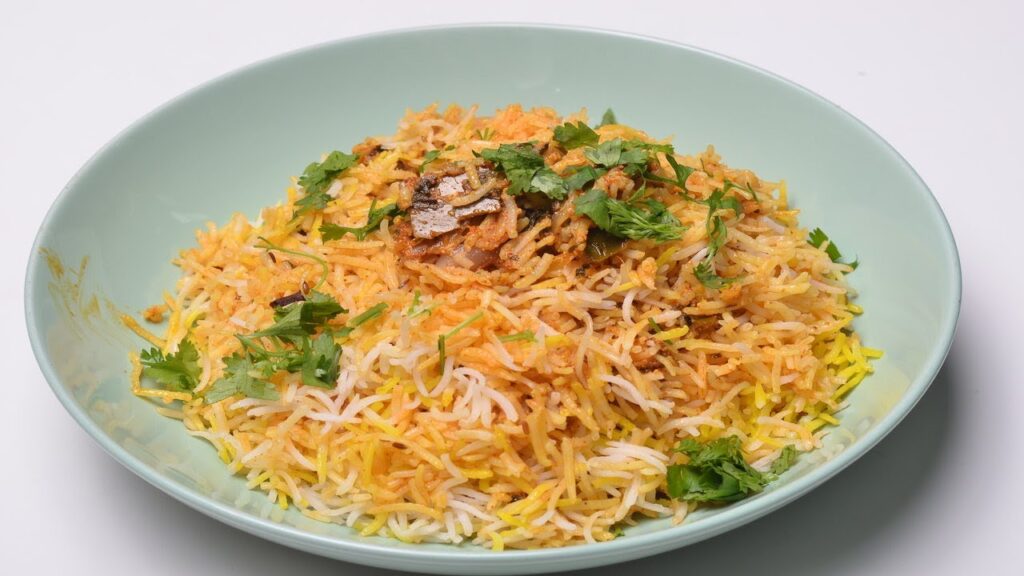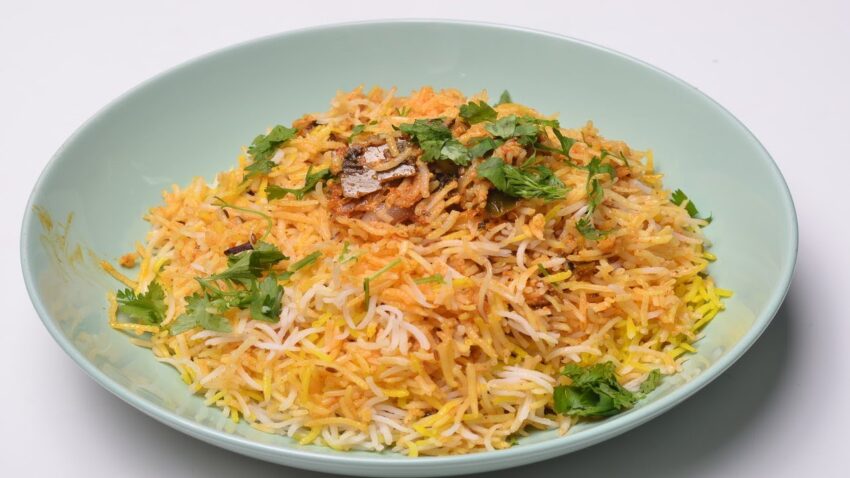
Avakkai Biryani: The Ultimate Guide to Andhra’s Tangy Rice Delight
Craving a biryani that’s both spicy and sour, a culinary adventure that dances on your taste buds? Then look no further than avakkai biryani, a unique and flavorful rice dish hailing from the Andhra region of India. This isn’t your typical biryani; the star ingredient – avakkai, or mango pickle – infuses the rice with a tangy, spicy, and utterly irresistible flavor. In this comprehensive guide, we’ll delve into the heart of avakkai biryani, exploring its origins, ingredients, preparation methods, variations, and everything you need to know to create a truly authentic and unforgettable dish. We aim to provide a resource far exceeding the average recipe, delivering expert insights and a deep understanding of this culinary gem.
What is Avakkai Biryani? A Deep Dive into Andhra’s Culinary Treasure
Avakkai biryani is a rice dish that uniquely combines the rich flavors of biryani with the distinctive tang of avakkai, a popular South Indian mango pickle. It’s not just a recipe; it’s a reflection of Andhra Pradesh’s culinary heritage, where bold flavors and innovative combinations are highly prized. Unlike traditional biryanis that rely heavily on meat and aromatic spices, avakkai biryani gains its character from the sour and spicy mango pickle, creating a vegetarian (often vegan) delight that’s both comforting and exciting.
The beauty of avakkai biryani lies in its simplicity. It cleverly repurposes a staple condiment, avakkai, to create a complete and satisfying meal. This dish highlights the ingenuity of Andhra cuisine, showcasing how everyday ingredients can be transformed into extraordinary culinary experiences. Think of it as a flavor explosion, where the heat of the spices is tempered by the sourness of the mango, creating a symphony of taste that lingers long after the last bite.
The History and Evolution of Avakkai Biryani
While the exact origins of avakkai biryani are difficult to pinpoint, it’s likely a relatively recent adaptation of traditional biryani recipes. Avakkai, being a ubiquitous pickle in Andhra homes, naturally found its way into various dishes. It’s plausible that someone, seeking a vegetarian alternative or simply experimenting with flavors, decided to incorporate avakkai into a biryani, thus giving birth to this unique dish. The dish probably evolved in home kitchens, with each family adding their own twist and variations to the recipe. It remains primarily a home-cooked dish, less frequently found in restaurants compared to other biryani varieties, adding to its charm and authenticity.
Key Ingredients: The Building Blocks of Flavor
The success of avakkai biryani hinges on the quality of its ingredients, particularly the avakkai itself. Here’s a breakdown of the essential components:
- Avakkai: This is the star! Use homemade avakkai for the best flavor. The pickle should be well-aged (at least a few weeks) to allow the flavors to fully develop. Choose a variety with a good balance of sourness, spiciness, and oil.
- Rice: Basmati rice is preferred for its aroma and fluffy texture. However, other long-grain rice varieties can also be used.
- Spices: A blend of spices is essential to complement the avakkai. Common spices include cumin, coriander, turmeric, red chili powder, and garam masala.
- Onions: Fried onions add sweetness and depth of flavor.
- Green Chilies: For an extra kick of heat. Adjust the quantity to your preference.
- Ginger-Garlic Paste: Adds a pungent aroma and flavor.
- Curry Leaves: Provide a distinct South Indian flavor.
- Cilantro: For garnish and a fresh aroma.
- Oil: Sesame oil is traditionally used, but vegetable oil can also be used.
Variations and Regional Differences
While the core concept of avakkai biryani remains the same, variations exist across different households and regions. Some common variations include:
- Adding Vegetables: Some recipes incorporate vegetables like potatoes, carrots, and peas to add more substance and texture.
- Using Different Types of Avakkai: Different varieties of avakkai, such as those made with garlic or mustard seeds, can be used to create unique flavor profiles.
- Adjusting the Spice Level: The amount of red chili powder and green chilies can be adjusted to suit individual preferences.
- Adding Nuts and Raisins: Some recipes include cashews and raisins for added richness and sweetness.
The Role of Mango Pickle in Andhra Cuisine: Heritage and Innovation
Avakkai is more than just a pickle in Andhra Pradesh; it’s a cultural icon. It’s a staple in almost every household, lovingly prepared during the mango season and enjoyed throughout the year. Its preparation is often a family affair, passed down through generations. The mango pickle not only adds flavor but also acts as a natural preservative, allowing people to enjoy mangoes even when they are not in season. The use of Avakkai in biryani is a testament to the creativity and resourcefulness of Andhra cooks. It’s a perfect example of how a simple ingredient can be used to create a complex and flavorful dish.
Step-by-Step Recipe: Crafting Authentic Avakkai Biryani
Now, let’s dive into the heart of the matter – the recipe! This is a detailed guide to help you create your own delicious avakkai biryani.
Ingredients:
- 2 cups Basmati rice
- 1 cup Avakkai (mango pickle), with oil and pieces
- 2 large onions, thinly sliced
- 4-5 green chilies, slit
- 1 tbsp ginger-garlic paste
- 1 tsp turmeric powder
- 1 tsp red chili powder (adjust to taste)
- 1/2 tsp garam masala
- 1/4 cup chopped cilantro
- 1/4 cup chopped mint leaves
- 1/4 cup fried onions (for garnish)
- 2 tbsp oil (from the avakkai jar)
- 2 tbsp vegetable oil
- Salt to taste
- 4 cups water
Instructions:
- Prepare the Rice: Wash the basmati rice thoroughly and soak it in water for at least 30 minutes. This helps the rice cook evenly and become fluffy.
- Sauté the Onions: Heat vegetable oil in a large pot or pressure cooker. Add sliced onions and sauté until golden brown. Remove half of the fried onions and set aside for garnish.
- Add Aromatics: Add green chilies and ginger-garlic paste to the pot. Sauté for a minute until fragrant.
- Add Spices: Add turmeric powder, red chili powder, and garam masala. Sauté for another minute, ensuring the spices don’t burn.
- Incorporate Avakkai: Add the avakkai (both the pieces and the oil) to the pot. Mix well with the spices and onions. Sauté for 2-3 minutes, allowing the flavors to meld together.
- Add Rice and Water: Drain the soaked rice and add it to the pot. Gently mix it with the avakkai mixture, ensuring the rice is evenly coated. Add water and salt to taste.
- Cook the Biryani: If using a pot, bring the mixture to a boil, then reduce the heat to low, cover the pot tightly, and simmer for 15-20 minutes, or until the rice is cooked through and the water is absorbed. If using a pressure cooker, cook for 2 whistles on medium heat.
- Garnish and Serve: Once the biryani is cooked, gently fluff it with a fork. Garnish with fried onions, chopped cilantro, and chopped mint leaves. Serve hot with raita (yogurt dip) or any side dish of your choice.
Expert Tips for Perfect Avakkai Biryani
To elevate your avakkai biryani game, here are some expert tips gleaned from years of experience:
- Use High-Quality Avakkai: The quality of your avakkai directly impacts the flavor of the biryani. Opt for homemade or a reputable brand.
- Don’t Overcook the Rice: Overcooked rice will result in a mushy biryani. Keep a close eye on the rice while it’s cooking and adjust the cooking time as needed.
- Adjust the Spice Level: Avakkai can be quite spicy, so adjust the amount of red chili powder and green chilies to your preference.
- Let it Rest: After cooking, allow the biryani to rest for 10-15 minutes before serving. This allows the flavors to fully develop and the rice to become more flavorful.
- Use Avakkai Oil: Using the oil from the avakkai jar adds a depth of flavor that’s hard to replicate. It infuses the biryani with the distinctive aroma of mango pickle.
Avakkai Biryani: A Healthier Biryani Option?
Compared to meat-heavy biryanis, avakkai biryani can be considered a healthier option, especially for vegetarians and vegans. It’s lower in fat and cholesterol and provides a good source of carbohydrates and fiber. The mango pickle also contains antioxidants and other beneficial compounds. However, it’s important to note that avakkai can be high in sodium due to the pickling process, so moderation is key.
Serving Suggestions and Accompaniments
Avakkai biryani is delicious on its own, but it can be enhanced with the right accompaniments. Here are some popular serving suggestions:
- Raita: A cooling yogurt dip helps to balance the spiciness of the biryani.
- Papadums: Crispy papadums add a textural contrast.
- Salad: A simple salad with onions, tomatoes, and cucumbers provides a refreshing side dish.
- Pickles: Additional pickles can be served for those who want an extra dose of tang.
Q&A: Your Avakkai Biryani Questions Answered
Here are some frequently asked questions about avakkai biryani:
- Can I use store-bought avakkai?
Yes, you can, but homemade avakkai is always preferable for the best flavor. Look for a reputable brand if using store-bought. - Can I make avakkai biryani in a rice cooker?
Yes, you can. Follow the same steps as above, but adjust the water ratio according to your rice cooker’s instructions. - Can I add meat to avakkai biryani?
While avakkai biryani is traditionally vegetarian, you can add meat if you prefer. Chicken or mutton would be good choices. Marinate the meat with spices and add it to the pot along with the rice. - How long does avakkai biryani last?
Avakkai biryani can be stored in the refrigerator for up to 2-3 days. Reheat it thoroughly before serving. - Can I freeze avakkai biryani?
Freezing is not recommended as the rice texture may change. It’s best to consume it fresh or within a few days. - What if my avakkai is too spicy?
Add a little bit of yogurt or cream to the biryani to temper the spiciness. - What if my avakkai is too sour?
Add a pinch of sugar to balance the sourness. - Can I use brown rice instead of basmati rice?
Yes, you can, but the cooking time will be longer. You may also need to add more water. - Is avakkai biryani gluten-free?
Yes, avakkai biryani is naturally gluten-free, as long as the avakkai itself doesn’t contain any gluten-based ingredients. - Where can I find authentic avakkai biryani in a restaurant?
While not as common as other biryani varieties, some South Indian restaurants, especially those specializing in Andhra cuisine, may offer avakkai biryani. Call ahead to check if it’s on the menu.
Conclusion: Experience the Tangy Magic of Avakkai Biryani
Avakkai biryani is more than just a dish; it’s a culinary experience. It’s a celebration of flavors, a testament to the ingenuity of Andhra cuisine, and a delightful way to enjoy the tangy goodness of mango pickle. Whether you’re a seasoned biryani enthusiast or a curious foodie looking for a new adventure, avakkai biryani is sure to tantalize your taste buds and leave you wanting more. So, gather your ingredients, follow our recipe, and embark on a culinary journey to discover the magic of avakkai biryani. We encourage you to share your avakkai biryani creations and experiences in the comments below. Happy cooking!

